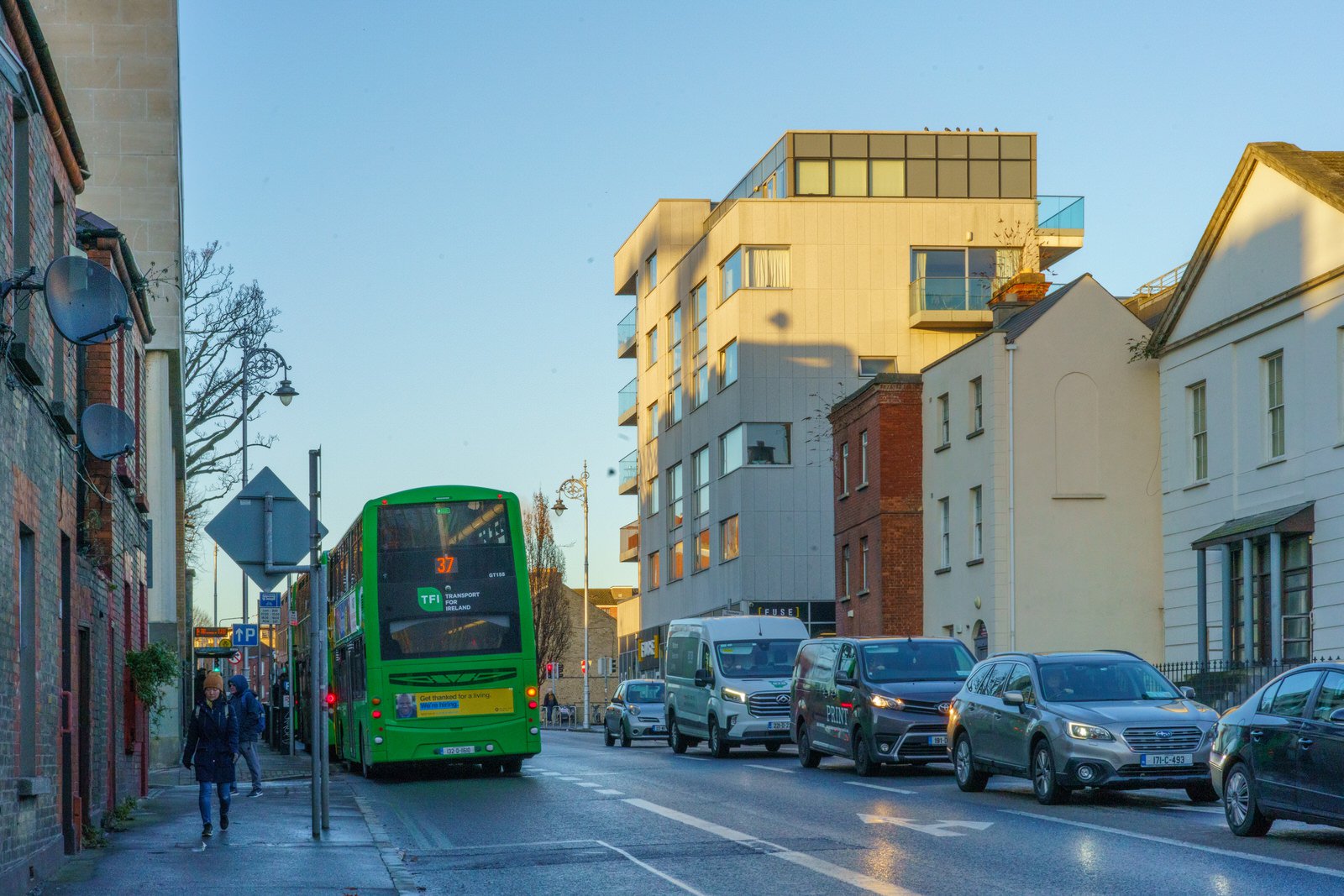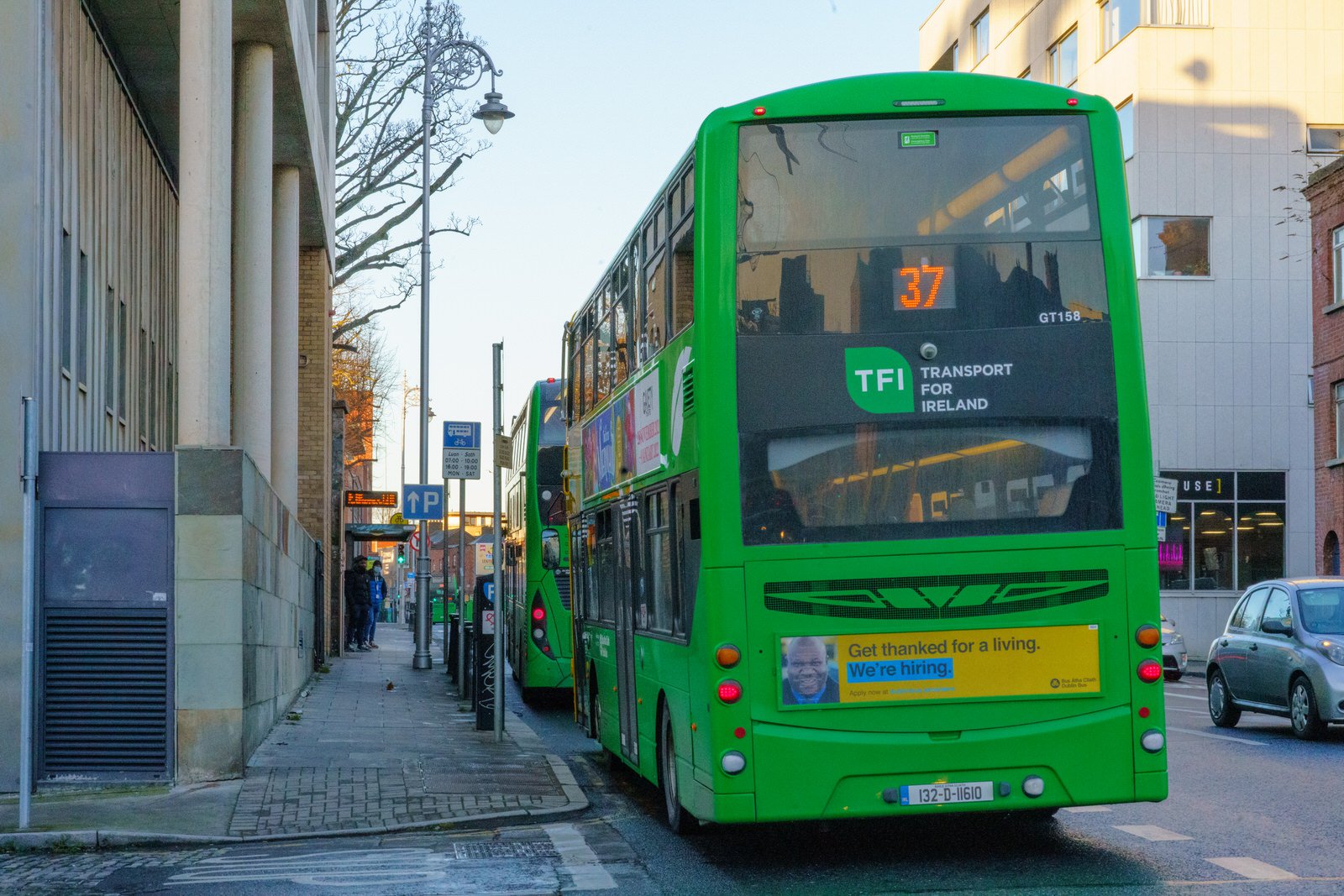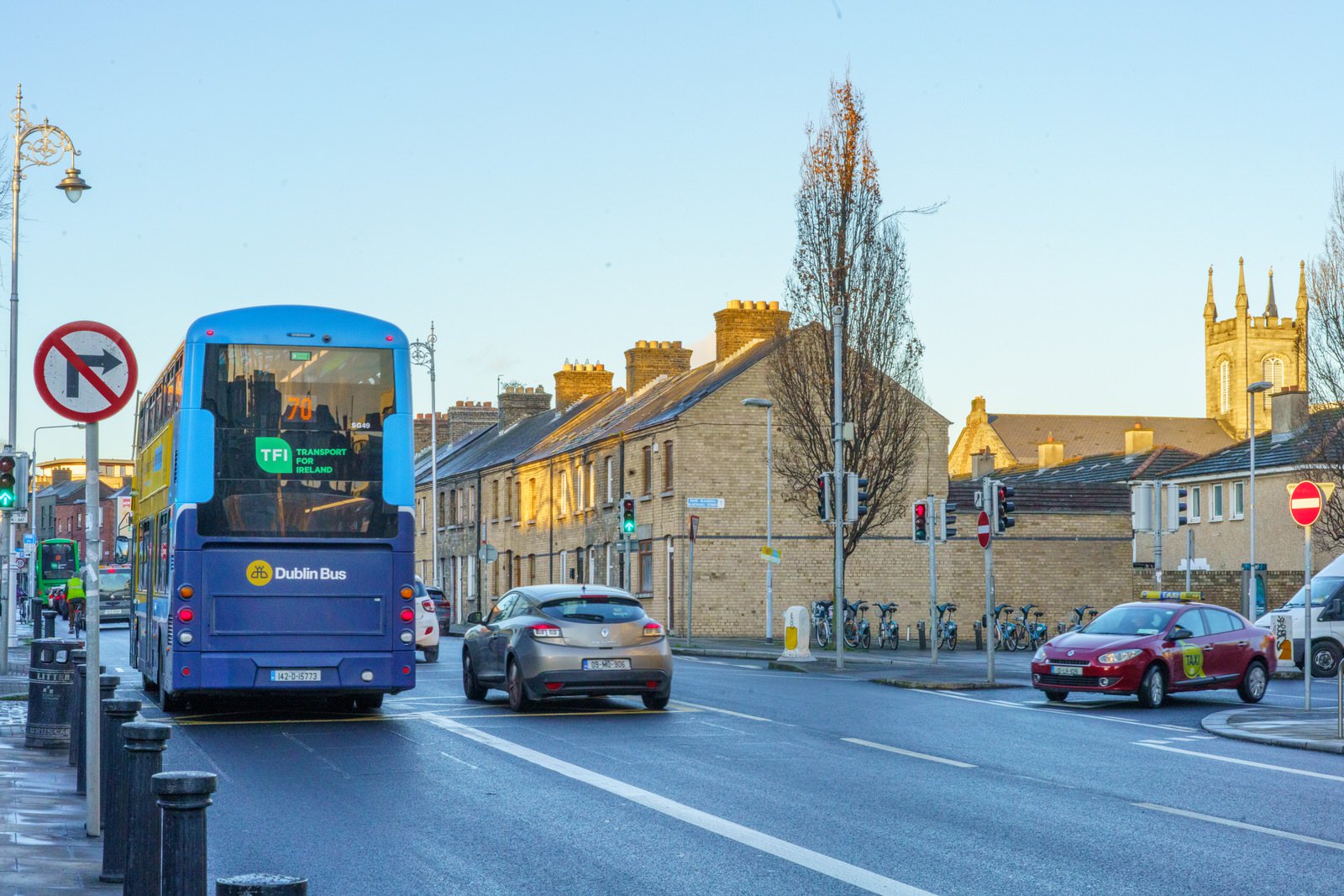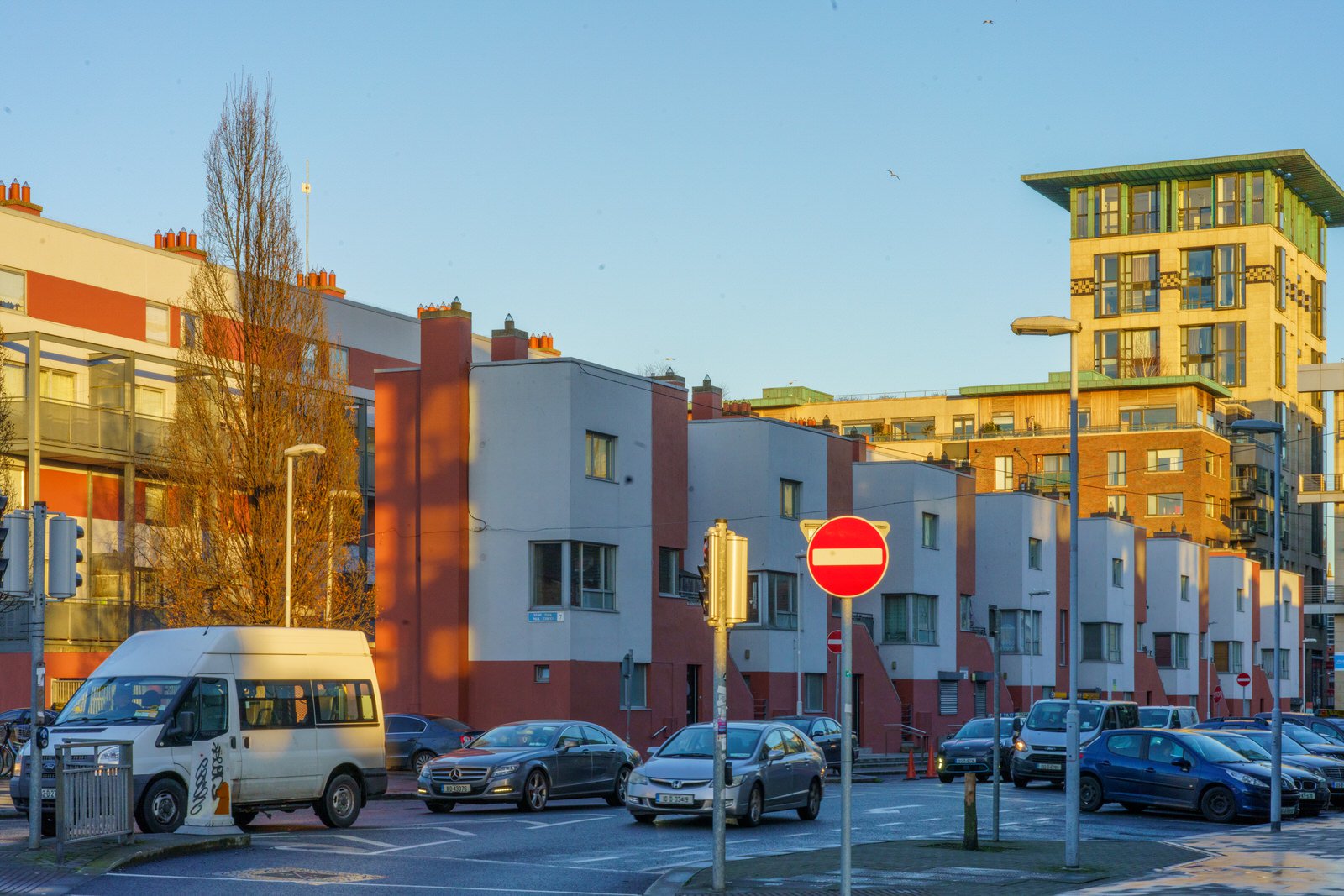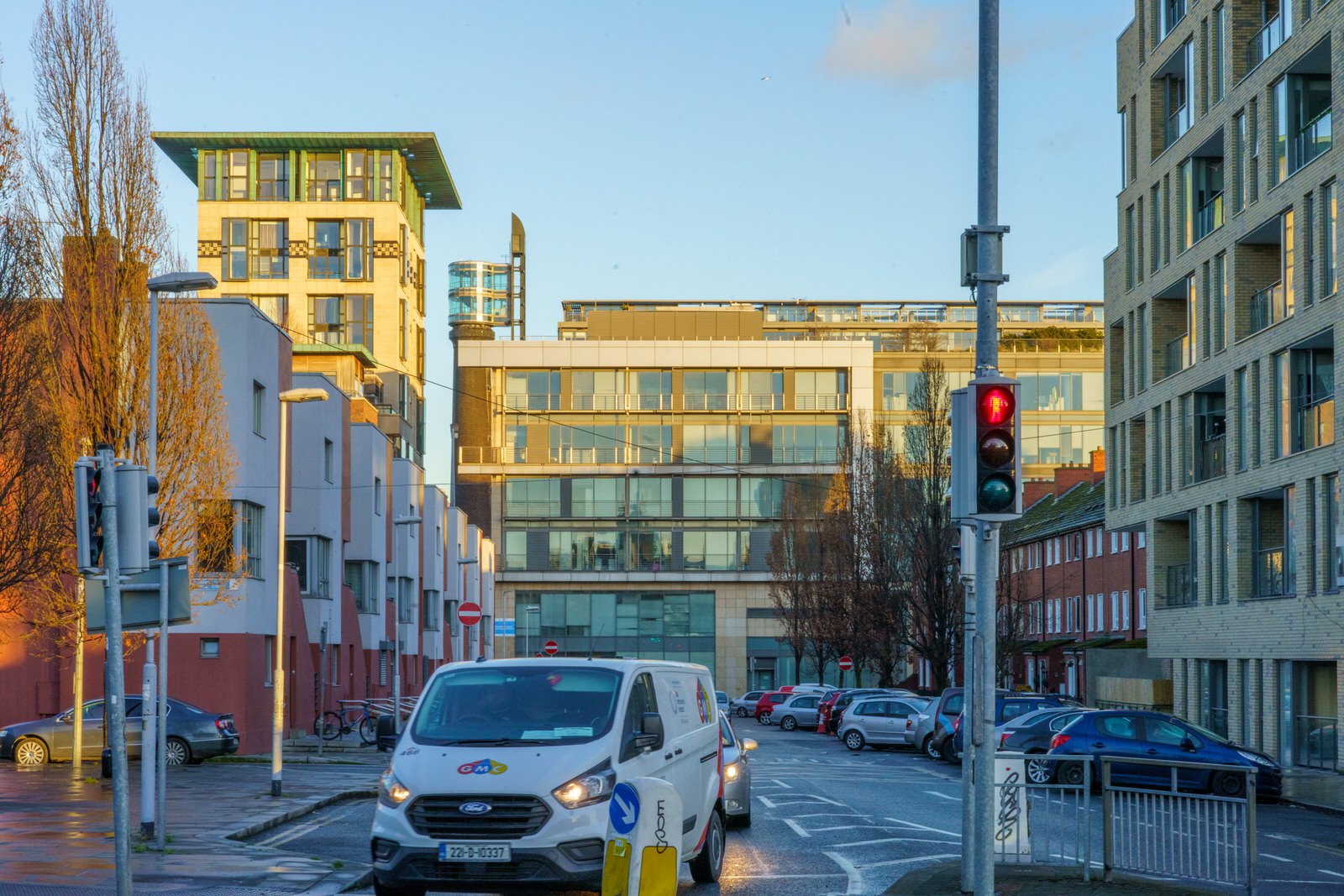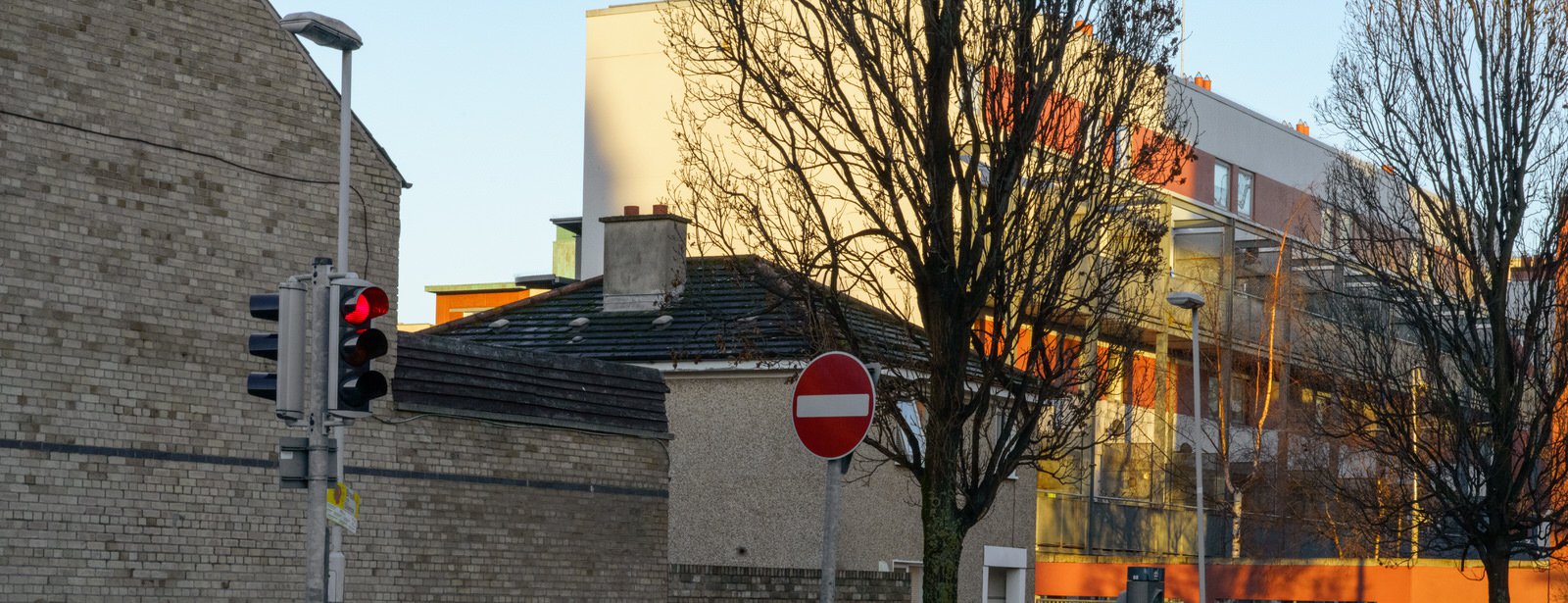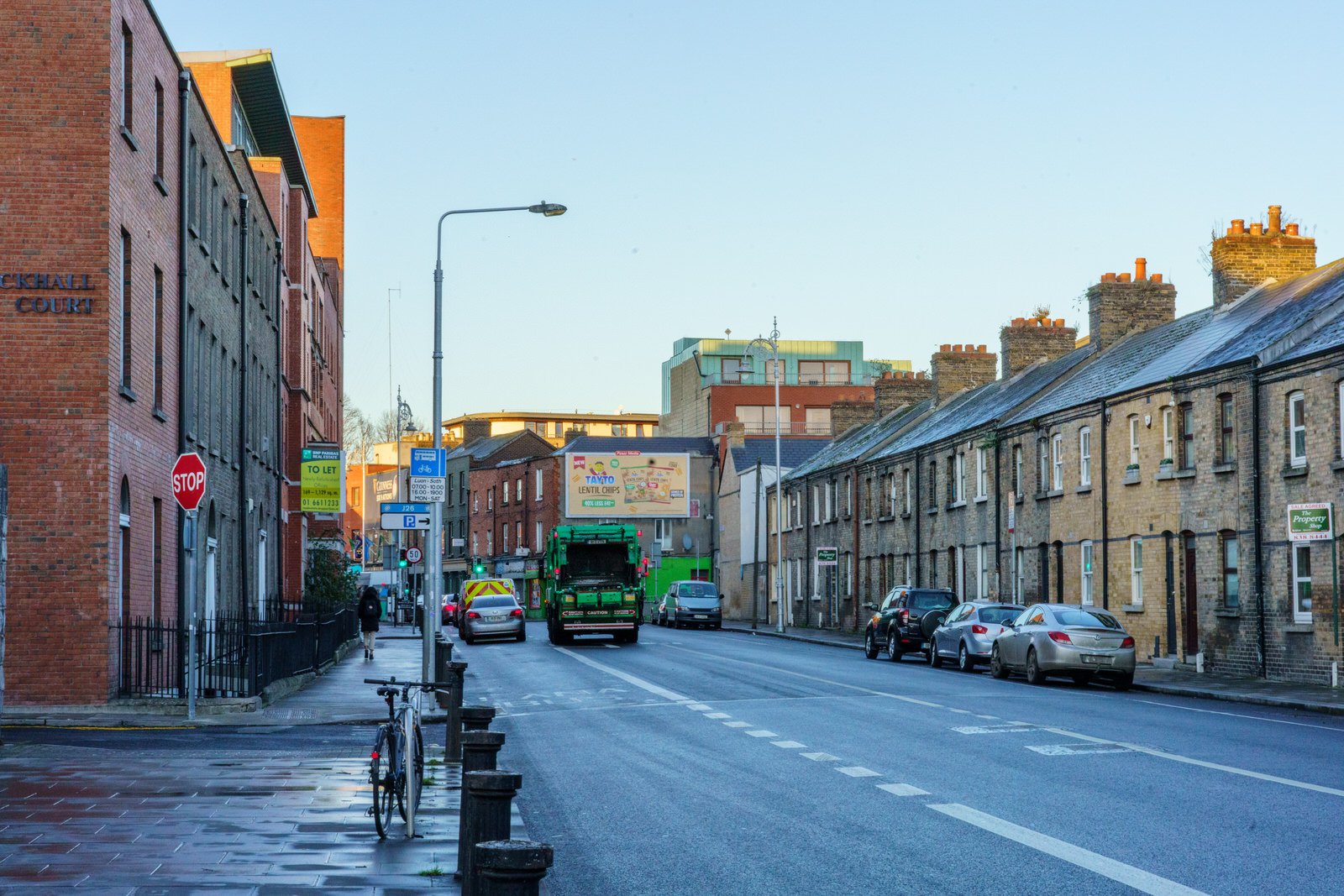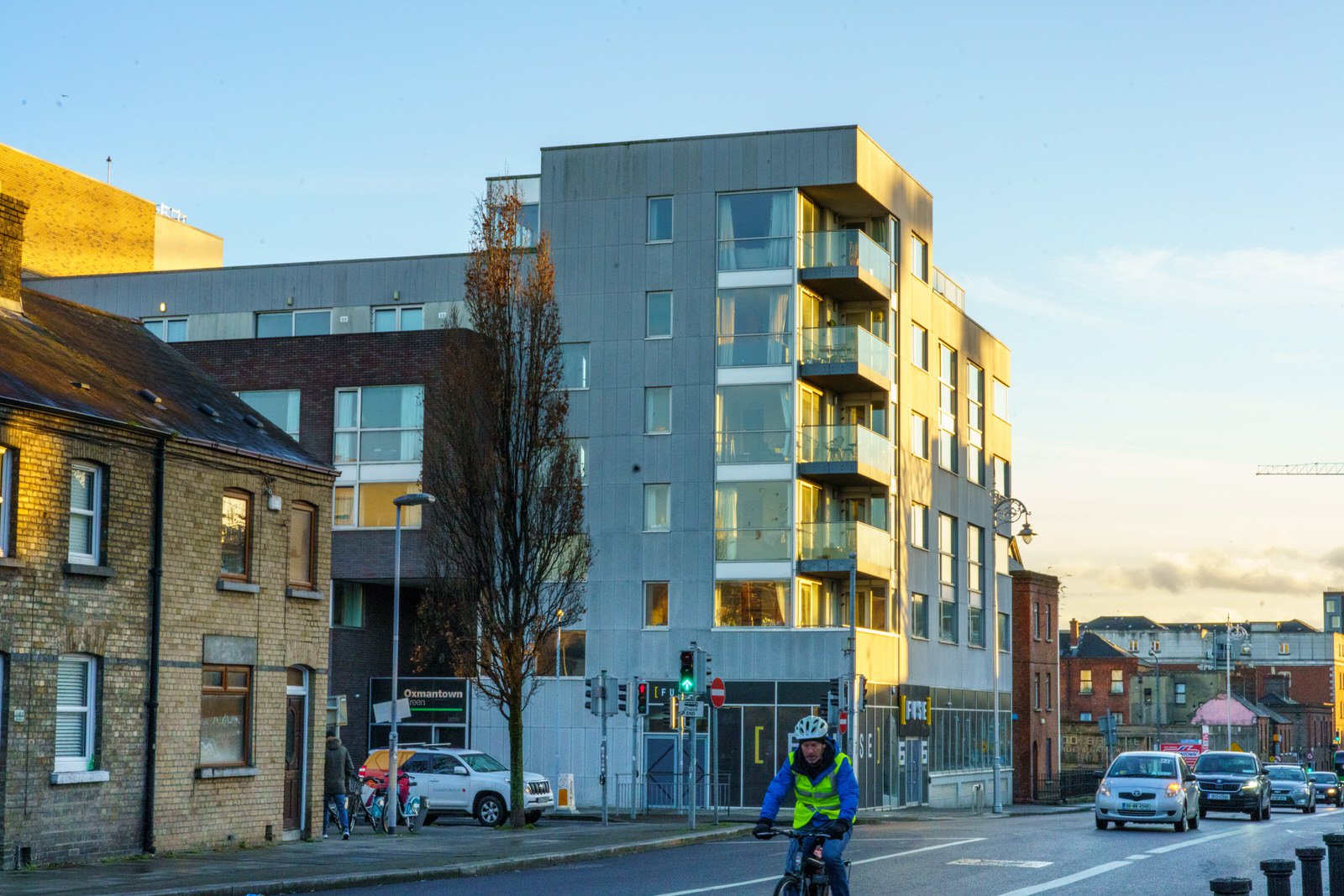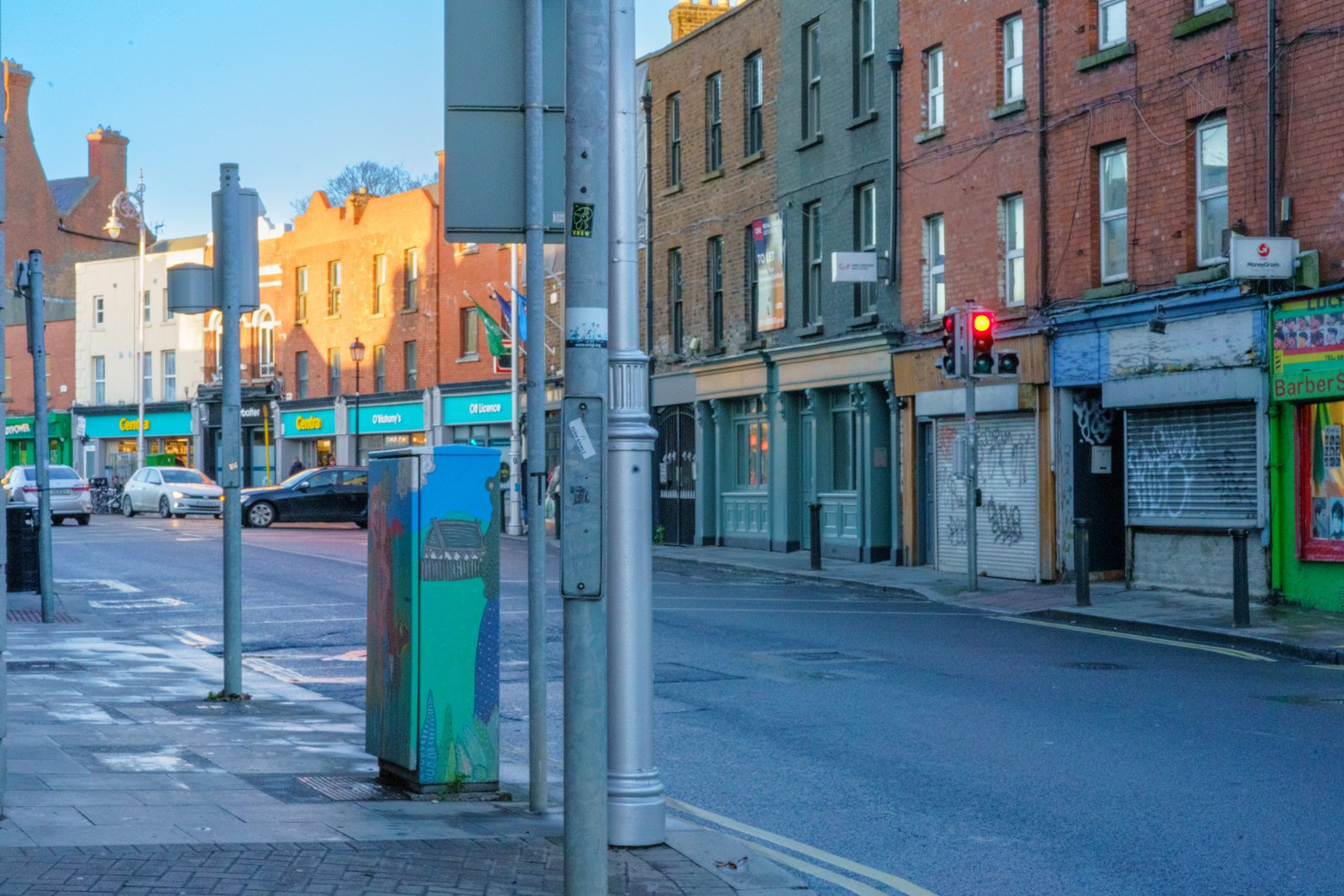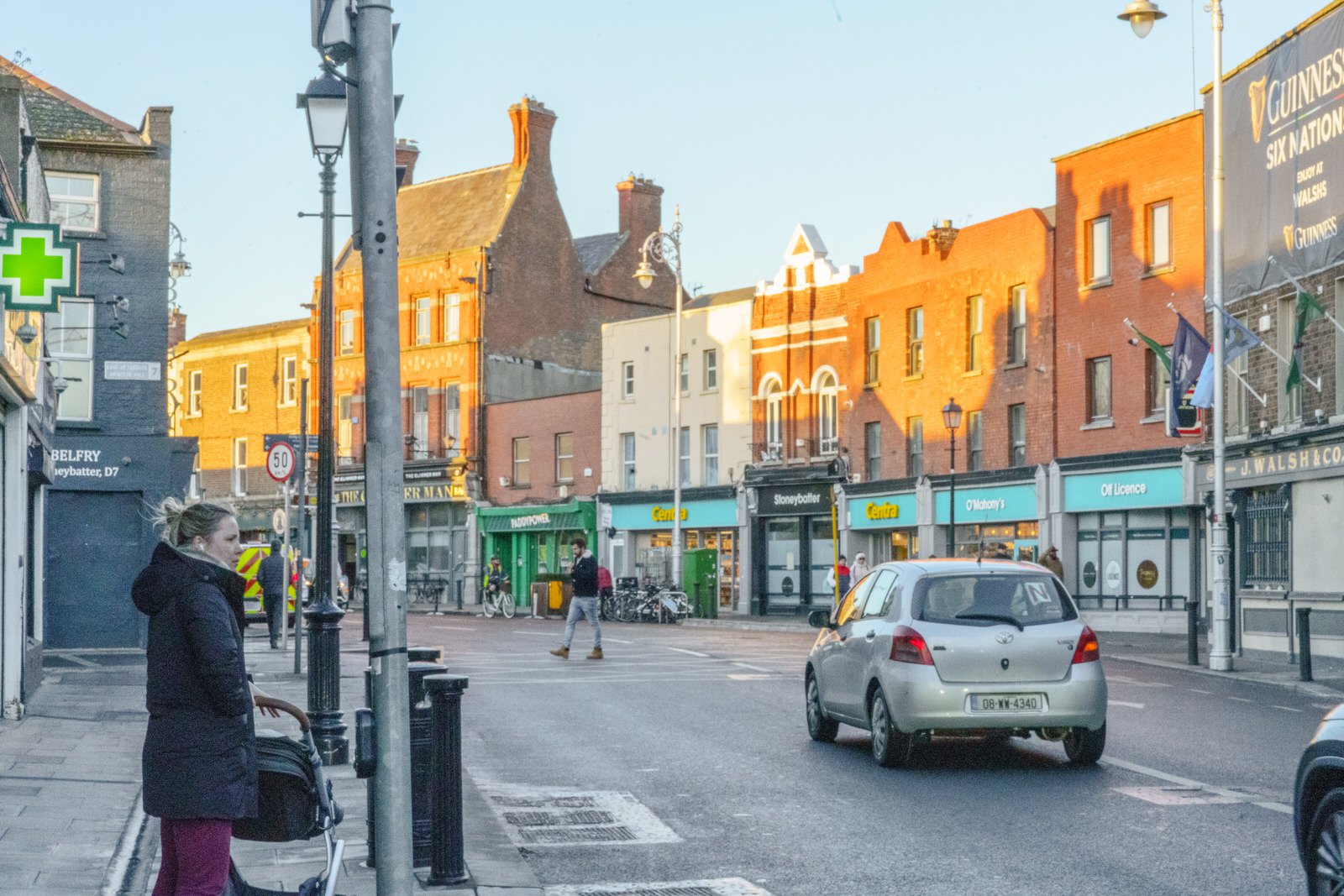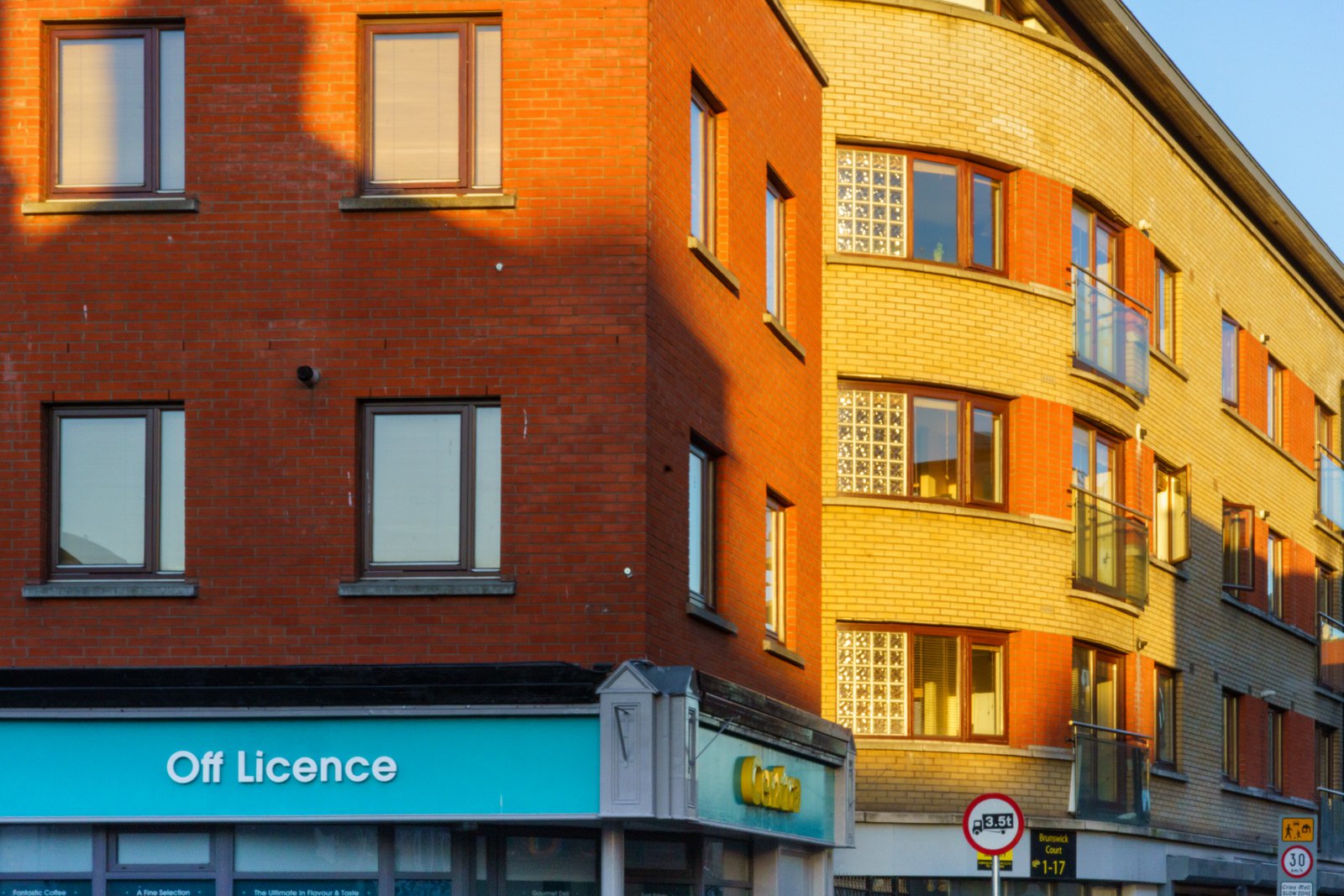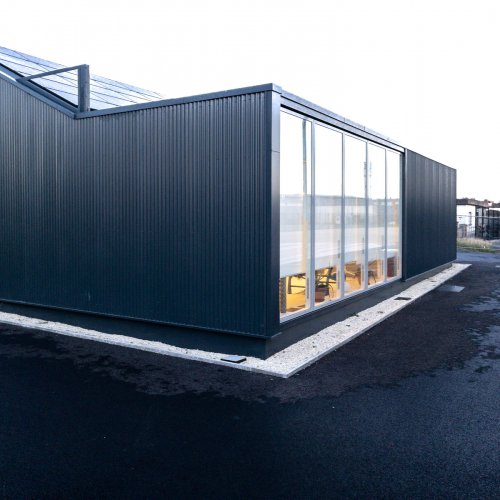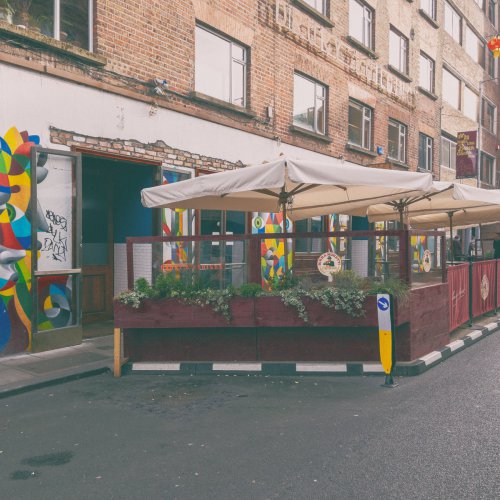Blackhall Place first appears on maps in 1822. This area of the city was previously known as Oxmanstown Green. The area was originally designed and laid out by Thomas Ivory, who designed the buildings now occupied by the Law Society of Ireland. The original street did not meet the river, and was extended to meet Benburb Street in 1886.
A large amount of the original Georgian houses have been demolished, with a small number of surviving examples. On the corner of Blackhall Place and Hendrick Street, there is a former Methodist chapel, known as the Gravel Walk Methodist Church. This was rebuilt in 1841.
The area around Blackhall Place, and the construction of the James Joyce Bridge was part of the 1996 Historic Area Rejuvenation Project.
In the late 19th century, the Dublin City Council developed a plot to create a new street as well as renovating existing tenements located in Blackhall Place. This plot involved the local finance and leases committee selling the property to the Artisans' Dwellings Committee. The site in question was Blackhall Place, Blackhall Street, Blackhall Parade and North King Street.
